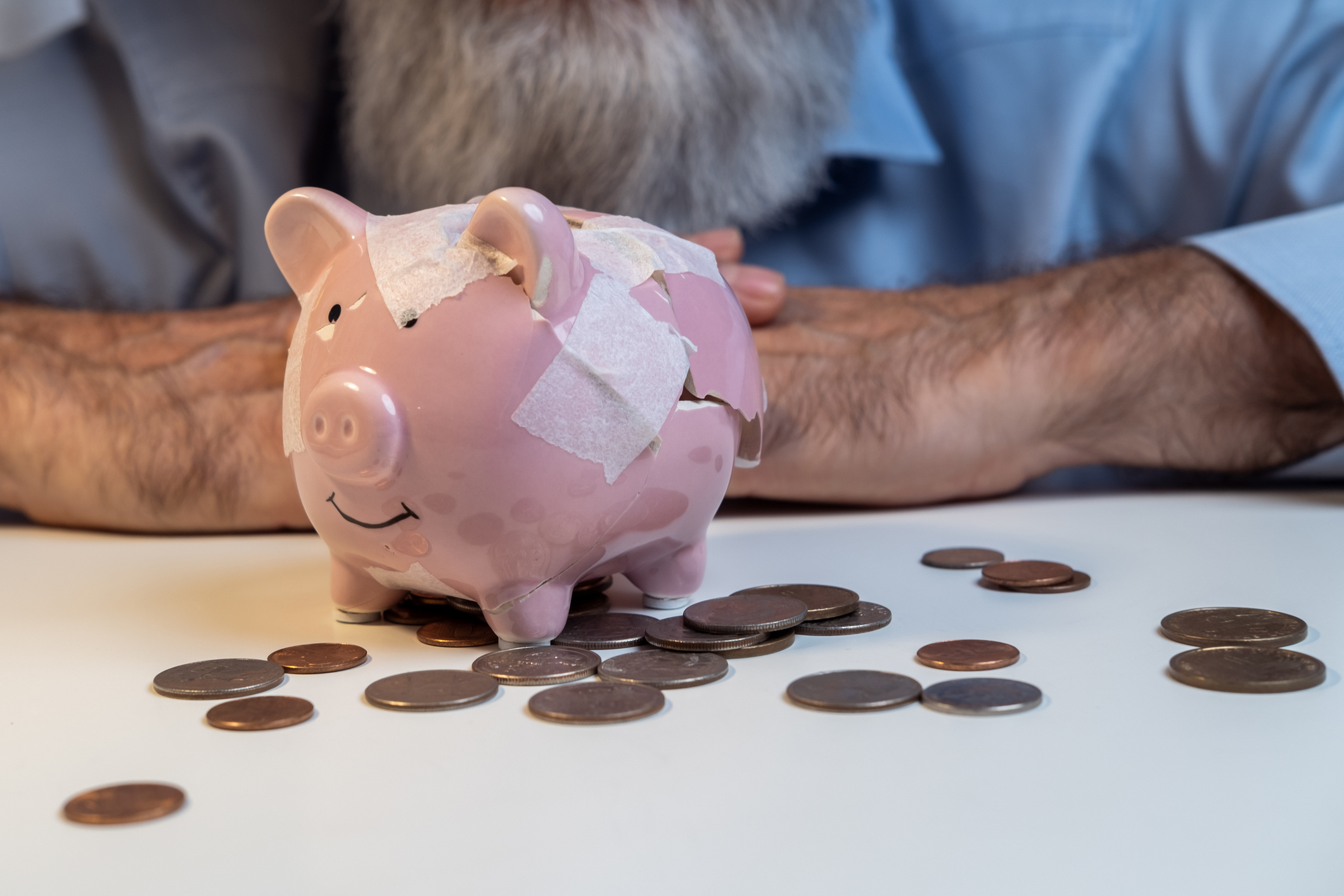Best High-Yield Savings Accounts — April 2025
A high-yield savings account can help you earn a rate outpacing inflation while giving you access to your cash when you need it. See our top choices.

Erin Bendig
If you're concerned about inflation, finding a savings vehicle that outpaces it can help. High-yield saving accounts offer you a healthy rate of return, with no effort on your end.
While saving rates dipped some following three rate cuts in 2024, the Federal Reserve didn't cut rates in March. Moving forward, they're in a wait and see mode. This means savers have some time before the May meeting to lock in a good rate.
Account | APY | Min. opening deposit |
|---|---|---|
4.50% | $1,000 | |
4.50% | $5,000 | |
4.45% | $0 | |
4.40% | $100 | |
4.40% | $500 | |
4.25% | $100 | |
4.25% | $250 | |
4.25% | $500 | |
4.25% | $2,500 | |
4.20% | $0 | |
4.15% | $10 | |
4.11% | $25,000 |
Rates on high-yield savings accounts are always changing, so a good way to check the most up-to-date rates is by using our savings tool, below, created in partnership with Bankrate.

Sign up for Kiplinger’s Free E-Newsletters
Profit and prosper with the best of expert advice on investing, taxes, retirement, personal finance and more - straight to your e-mail.
Profit and prosper with the best of expert advice - straight to your e-mail.
What are high-yield savings accounts?
Essentially, high-yield savings accounts are the same as traditional savings accounts with one key difference — high-yield savings accounts pay a higher-than-average APY on deposits, meaning you'll be able to accrue more cash over time. And they're great options if you're looking for a risk-free way to maximize your savings.
Most high-yield savings accounts are federally insured, keeping your savings secure if your bank or credit union fails. If you open an account through a bank, the FDIC will protect up to $250,000 in individual deposit accounts and up to $250,000 for each person’s share of joint accounts. For accounts opened with a credit union, the NCUA will protect up to $250,000 per credit union member (whether in an individual or a joint account.
Unlike CDs in which your cash is locked away for a fixed period, high-yield savings accounts let you easily access the funds in your account. For this reason, they're good options for short-term savings goals or emergency funds. Plus, sometimes these accounts offer a savings account bonus, putting more money in your pocket.
Ways to use high-yield savings accounts
These accounts allow you to set savings goals for short or longer term purchases. Whether you want to save for a dream vacation, a retirement party, or even have some money set aside to start your business in retirement, high-yield savings accounts can help you reach your goals quicker.
Pros and cons of high-yield savings accounts
As with all savings products, there are pros and cons associated with high-yield savings accounts. It's important to compare all aspects of an account to make sure it meets your needs before opening it.
Pros:
- Higher APYs: Since high-yield savings accounts have higher APYs than traditional savings accounts, you’ll accrue more interest over time. Plus, interest in these accounts is compounded daily.
- Safety: Many high-yield accounts are FDIC or NCUA insured, meaning that if something were to happen to the bank (or credit union) your account is with, your money will still be safe.
- Accessibility: While there are sometimes limitations to the number of free withdrawals you can make from a savings account, your money is still readily accessible whenever needed.
Cons:
- Harder to access than traditional savings accounts: If you have a savings account that's with a different bank than your checking account, you may have to wait a few days for funds to transfer from one to the other. Plus, you won’t be able to easily view account details for both accounts in one place unless you have the right budgeting app.
- Not suited for long-term goals: If you’re looking to save for long-term goals, like retirement, other investments, like stocks, are usually a better choice for your money. The rate of inflation can be higher than what you accrue in interest.
- Variable interest rates: Since interest rates are variable, the APY on the account can decrease from the rate it was when you opened the account if the Fed decides to cut rates in the future.
- Minimum deposit requirements and fees: Many high-yield savings accounts charge a monthly fee and/or require a minimum deposit to earn the advertised APY.
- Online banks: Since most high-yield accounts are offered by online banks, you likely won’t have branch access, so contacting customer service or accessing a fee-free ATM might be more challenging.
Bottom line
Opening a high-yield savings account is an excellent option to consider. High-yield savings accounts offer higher rates than traditional savings accounts, meaning your cash will accrue more interest by simply sitting in a high-yield account than it would in a standard account. And there's no risk, either.
The downside? Since rates on high-yield savings accounts fluctuate with the market, take advantage of the best rates while you still can.
Related Content
Get Kiplinger Today newsletter — free
Profit and prosper with the best of Kiplinger's advice on investing, taxes, retirement, personal finance and much more. Delivered daily. Enter your email in the box and click Sign Me Up.

Sean is a veteran personal finance writer, with over 10 years of experience. He's written finance guides on insurance, savings, travel and more for CNET, Bankrate and GOBankingRates.
- Erin BendigPersonal Finance Writer
-
 6 Stunning Waterfront Homes for Sale Around the US
6 Stunning Waterfront Homes for Sale Around the USFrom private peninsulas to lakes, bayous and beyond, Kiplinger's "Listed" series brings you another selection of dream homes for sale on the waterfront.
By Charlotte Gorbold Published
-
 Six Reasons to Disinherit Someone and How to Do It
Six Reasons to Disinherit Someone and How to Do ItWhether you're navigating a second marriage, dealing with an estranged relative or leaving your assets to charity, there are reasons to disinherit someone. Here's how.
By Donna LeValley Published
-
 Use This 1-Year CD if You’ll Owe Taxes Next Year
Use This 1-Year CD if You’ll Owe Taxes Next YearA one-year CD allows you to set money aside now for taxes you'll owe next year. We'll show our best choice.
By Sean Jackson Published
-
 What Happens If You Bet $1,100 on the NCAA Men’s Championship Instead of Saving It?
What Happens If You Bet $1,100 on the NCAA Men’s Championship Instead of Saving It?We ran the numbers — see how betting on the big game compares to putting your money in a CD.
By Dori Zinn Published
-
 Why I'd Put My Tax Refund in a Money Market Account
Why I'd Put My Tax Refund in a Money Market AccountA money market account offers you the benefits of having access to your money when you need it, while earning a rate outpacing inflation.
By Sean Jackson Published
-
 5 CDs to Put Your Tax Refund Into
5 CDs to Put Your Tax Refund IntoPlanning to get a tax refund this year? Treat your future self with a risk-free way to grow your money. Here are the 5 best CDs to consider.
By Sean Jackson Published
-
 10 Best High-Yield Savings Accounts to Grow Your Tax Refund
10 Best High-Yield Savings Accounts to Grow Your Tax RefundIf you're getting a tax refund this year and want to grow it, here are the best high-yield savings accounts to make it happen.
By Sean Jackson Published
-
 I Wouldn't Use These Types of CD Accounts Right Now
I Wouldn't Use These Types of CD Accounts Right NowThe good news is you can earn over 4% on many CDs. However, there are three types of CDs I wouldn’t currently recommend.
By Sean Jackson Last updated
-
 Is a Long-Term CD the Best Option for Saving?
Is a Long-Term CD the Best Option for Saving?CDs offer good rates and guaranteed returns. However, are they the best option for longer range savings goals?
By Sean Jackson Published
-
 Is a Joint Bank Account Romantic or Risky?
Is a Joint Bank Account Romantic or Risky?Considering a joint bank account with your partner? Discover the advantages and potential pitfalls to determine if it's the right choice for your relationship.
By Dori Zinn Published